|
 In his latest leadership message, Chris Oliver, head of NOAA Fisheries, explains the theme of this year’s Habitat Month: highlighting the benefits to people of NOAA’s habitat restoration efforts.
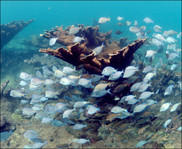
During Habitat Month, NOAA is celebrating underwater habitat and its benefits for commercial fisheries, coastal tourism, and community resiliency. From shallow coral reefs, to oyster reefs, to deep-sea coral reefs, learn more about how NOAA works to conserve these important underwater habitats.
|
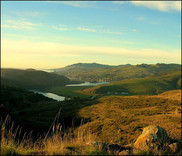
Float along with NOAA as we discuss water quantity, riverbank restoration, and more in this interview with California’s Russian River. ;)
|
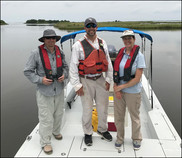
To celebrate Habitat Month, follow along with NOAA’s Habitat Conservation Division and Restoration Center as they inspect a marsh creation project in southeast Louisiana.
|
|
|
Highlights
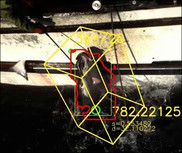
Researchers at the Alaska Fisheries Science Center are developing electronic monitoring systems and image-processing applications to automate data collection from images captured onboard fishing vessels. The goal is to use real-time image processing to collect data that can provide greater certainty in fisheries management decisions.
|
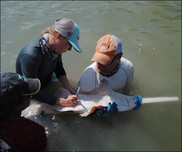
This month, biologists from the Southeast Fisheries Science Center headed to the Everglades to capture, tag, and release endangered smalltooth sawfish. In two short videos, Dr. John Carlson explains the sampling technique and Dr. Andrea Kroetz performs a small surgery to implant a tag on a captured sawfish.
|
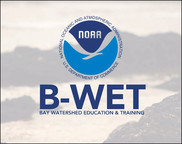
Around the country, students are learning how to be stewards of their local watersheds. In a new video series, see how NOAA’s Bay Watershed Education and Training
(B-WET) Program is empowering students to take action through Meaningful Watershed Educational Experiences.
|
|
|
Alaska
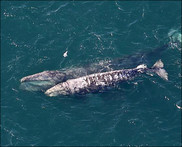
Every year since 1979, NOAA has conducted line-transect aerial surveys of arctic marine mammals in the Beaufort and Chukchi seas. This year, the surveys will expand to include some Canadian waters to collect further data on bowhead whales. Follow the survey blog for updates.
|
|
|
Pacific Islands

A new study projects the effects of climate change and fishing on Hawaii’s bigeye tuna (‘ahi) fishery. An ecosystem model designed by researchers at the Pacific Islands Fisheries Science Center and partner institutions found that climate change is likely to lead to declines in bigeye catch. But the study identifies management scenarios that may increase ecosystem resiliency.
|
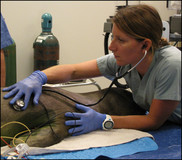
Meet Dr. Michelle Barbieri, a conservation medicine veterinarian on a shared appointment at NOAA’s Pacific Islands Fisheries Science Center and the Marine Mammal Center. Dr. Barbieri recently received the Presidential Early Career Award for Scientists and Engineers for her achievements in scientific research, leadership, community engagement, and community service.
|
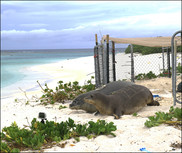
At the summer field camp on Laysan Island in the Northwestern Hawaiian Islands, researchers are monitoring two rehabilitated monk seal pups. Watch a video of their release.
|

NOAA Fisheries announced final 2019 catch limits for longline-caught bigeye tuna for each of the U.S. Pacific territories (American Samoa, Guam, and the Northern Mariana Islands.) The final 2019 measures are identical to those implemented annually in the three territories since 2014.
|
|
|
Southeast
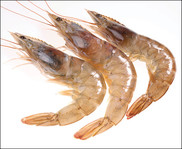
This fishing year, scientists expect the harvest of brown shrimp in the western Gulf of Mexico (waters off Texas and Louisiana) to be below its historical average. NOAA scientists make an annual prediction of brown shrimp catches based on monitoring of juvenile brown shrimp abundance, growth estimates, and environmental indicators.
|
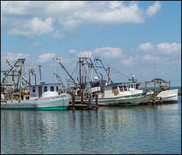
The Open Ocean Trustees for the Deepwater Horizon Natural Resource Damage Assessment have reopened the public comment period for the Draft Restoration Plan 2. This plan proposes 18 preferred restoration alternatives for fish, sea turtles, marine mammals, and mesophotic and deep benthic communities. Comments are now due August 2.
|
|
|
Greater Atlantic
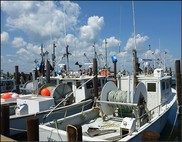
NOAA Fisheries approved Framework Adjustment 58 to the Northeast Multispecies Fishery Management Plan and announced final quotas for fishing year 2019. For 2019, the majority of commercial fishing quotas will not change from 2018. Quotas will increase for four stocks and decrease for three stocks.
|
|
|
Upcoming Deadlines
July 30: Pre-proposals due for 2020 Saltonstall-Kennedy Grants.
August 31: Applications due for open seats on New England Fishery Management Council advisory panels.
|
|
Upcoming Events
July 25: Free Atlantic Shark Identification workshop in Rosenberg, Texas.
July 25 and 30: Public scoping meetings for three Atlantic Highly Migratory Species actions.
July 25–September 30: Free tours every weekday at NOAA Fisheries’ Ted Stevens Marine Research Institute in Juneau, Alaska.
July 30 and August 13: Two in-person public hearings on a proposed rule for pelagic longline bluefin tuna, in New Jersey and North Carolina.
July 31: Public hearing via conference call on a proposed rule for pelagic longline bluefin tuna.
August 1–September 10: Four public hearings on the proposed Atlantic Surfclam and Ocean Quahog Excessive Shares Amendment, hosted by the Mid-Atlantic Fishery Management Council.
August 6 and 14: Two free Protected Species Safe Handling, Release, and Identification workshops in North Carolina and Florida.
August 12–15: Gulf of Mexico Fishery Management Council meeting in New Orleans.
August 13–15: Mid-Atlantic Fishery Management Council meeting in Philadelphia.
August 22: Free Atlantic Shark Identification workshop in Bohemia, New York.
|
|
|
|